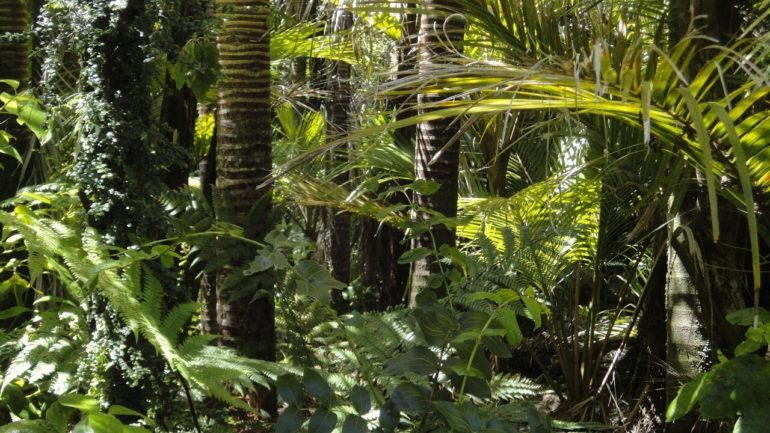For the first time, scientists know more about what trees are dominant in the overstory and the understory of the Amazon.
Freddie Draper, a postdoctoral research fellow, Christopher Baraloto, director of the Land and Biodiversity Division of the FIU Institute of Environment, and a team of more than 150 collaborators assembled a new dataset on what species of trees are growing in the Amazon. They found that size matters in determining what trees become dominant. Those species dominating the canopy are different from the ones growing below the canopy in the understory.
Understanding what trees make up the Amazon and where they grow has important implications for understanding how carbon is stored and moved. It can also help scientists better understand the impacts the climate crisis could have on the Amazon’s biodiversity.
“It’s hard to understand what’s happening to Amazonian biodiversity in response to climate change, simply because there’s so many species of trees it can be overwhelming,” lead author Draper said. “By identifying the trees that dominate in different size classes in different regions, we provide a framework that makes the whole thing more manageable.”
Researchers discovered the high forest-canopy is dominated by just a few key plant families—like the legume or bean family—that are able to grow to heights of 150 feet and thrive in the exposed and hot environment above the canopy. Understanding these canopy trees is important because these massive species are those that we can see in satellite data and also store the most carbon.
The research team knew even less about was what was happening beneath the canopy in the forest understory. These small trees, narrower than wine bottles, are invisible to most satellite sensors, and have often been overlooked by other researchers. It turns out, this understrony layer is dominated by a range of species from many different families or lineages, including small palm trees and those from the pepper family. The authors suggest that these different lineages have evolved to dominate different aspects of understory environment, with some species dominating hot and sunny treefall gaps, and others dominating the damp deep shade found under tall forests.
Understanding the understory was a daunting undertaking. Assembling this dataset required Draper, Baraloto and their many collaborators to travel to the remote corners of Amazonia, measuring trees, and collecting fruit, flowers and and leaves in order to identify the species. Many of the species they came across, Draper believes, are likely be undiscovered species new to science.
To piece together a more complete story of what trees are growing in the Amazon, the network of scientists has been collecting this data for more than four decades. They surveyed 1,240 sites and documented more than 4,600 species throughout Amazonia. Identifying where species occur across the region and within the vertical layer of each forest helps scientists understand how the species dominating the Amazon are changing in the face of unprecedented climate change, forest fires and deforestation.
“The first time most people experience an Amazonian forest, they are awestruck by the many layers of vegetation stretching from their fingertips up ten stories above to the canopy,” Baraloto said. “This study shows how the patterns of this incredible diversity—both within these vertical layers and across thousands of kilometers of the region—can be simplified so that we can better monitor and predict the responses to climate change of this region’s important biodiversity and associated services such as carbon storage.”
Understanding what trees make up the Amazonian forests has important implications for understanding how carbon is stored and released. It can also help scientists better understand the impacts the climate crisis could have on Amazonian biodiversity and its associated ecological benefits.
The study was published in Nature Ecology and Evolution.
How will the biggest tropical trees respond to climate change?
More information:
Frederick C. Draper et al. Amazon tree dominance across forest strata, Nature Ecology & Evolution (2021). DOI: 10.1038/s41559-021-01418-y
Provided by
Florida International University
Citation:
Environmental researchers uncover the story of the Amazon’s understory (2021, April 2)
retrieved 5 April 2021
from https://phys.org/news/2021-04-environmental-uncover-story-amazon-understory.html
This document is subject to copyright. Apart from any fair dealing for the purpose of private study or research, no
part may be reproduced without the written permission. The content is provided for information purposes only.



